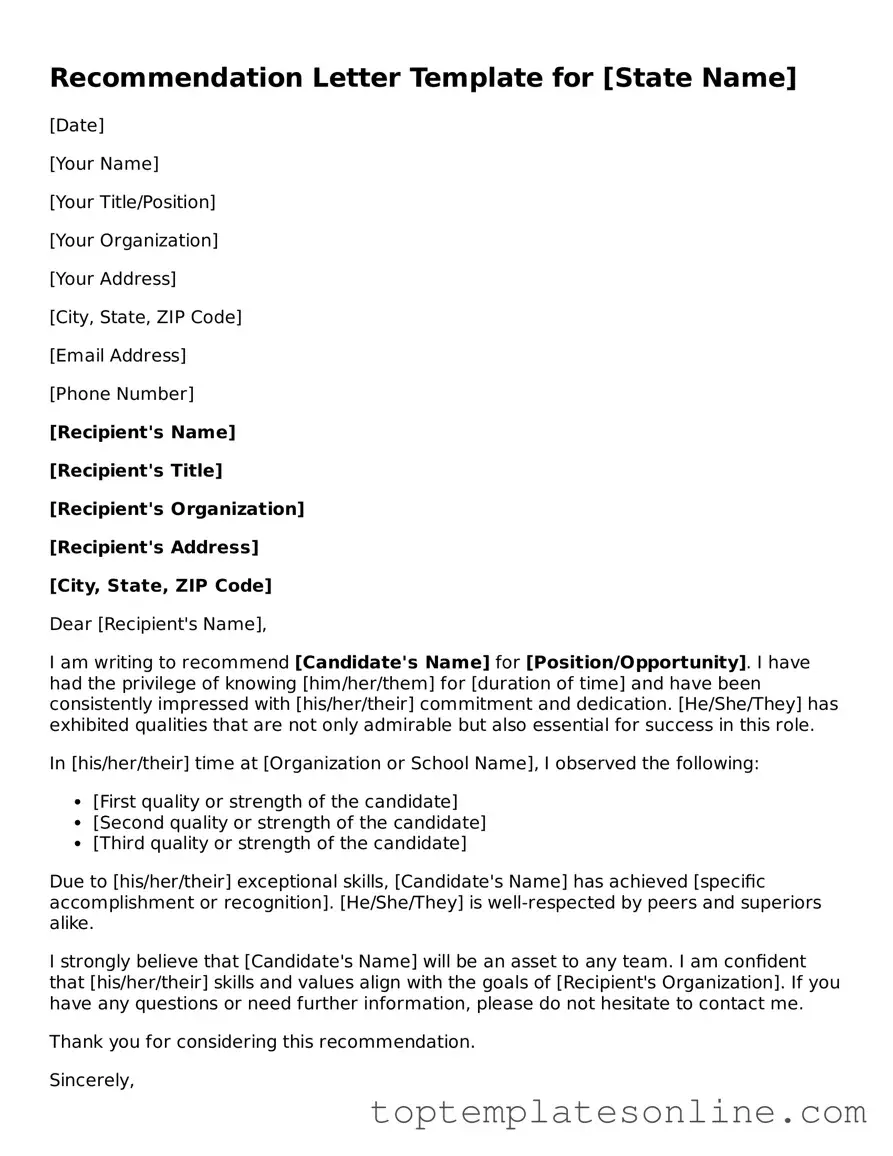Attorney-Approved Recommendation Letter Form
The Recommendation Letter form is a document used to provide a formal endorsement of an individual's skills, character, and qualifications. Often requested by educational institutions or employers, this form allows the recommender to share insights that can significantly influence the recipient's opportunities. Understanding how to effectively complete this form can enhance its impact and ensure it serves its intended purpose.
Customize Recommendation Letter Here
